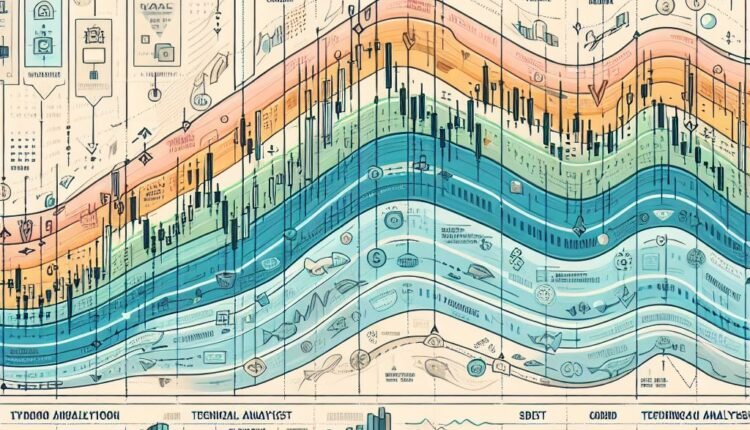Channel Patterns: Guidelines for Traders
Traders can specify their entry and exit locations inside an equity by using channels, which offer a dependable and straightforward method. While the fundamentals of channel trading provide traders with a clear picture of where the price is headed within the channel, they don’t give much away about potential breakout locations. However, recognizing patterns called Gartleys and Wolfe Waves can aid in forecasting the time and extent (relative to the established channel) of these breakouts. The channeling methods based on these patterns will be thoroughly examined in this article, along with how you may use them to make money. In every market, the Wolfe Wave is a natural pattern. Its fundamental form depicts a struggle for equilibrium, or balance, between supply and demand. Instead of being created, this naturally existing pattern was found to be a useful tool for forecasting supply and demand levels. These patterns are quite narrow in scope, yet they are very flexible in terms of time. For example, depending on the channel, Wolfe Waves might occur over minutes or even for weeks or months at a time. However, the scope can be anticipated with remarkable precision. For this reason, Wolfe Waves may be very powerful when used appropriately.
Symmetry is the primary characteristic that distinguishes the Wolfe Wave pattern. The most exact patterns may be shown below, when the temporal intervals between wave cycles are equal, ranging from 1 to 5. A continuation pattern created by combining two lines is the channel chart pattern. When these two lines are drawn on the price chart, they resemble a channel since they are parallel to one another. The channel’s bottom line serves as the support line and the upper line as the resistance line. Channels that are oriented upward are referred to as bullish channels, while those that are oriented downward are known as bearish channels.
Positive Channel Pattern:
A continuation pattern with a positive slope is called a bullish channel. The previous positive trend will continue if prices break out from the top channel line. Types of Chart Patterns can reduce their long position and increase their short position if the prices breach the lower channel line. Traders have the option to wait for a downturn rather than taking the whole short at this point. Bearish Channel Pattern: A continuation pattern with a negative slope is known as a bearish channel. The previous negative trend will continue if prices break out from the bottom channel line. Alternatively, traders might increase their long position and reduce their short position if the prices breach the upper channel line.
The horizontal channel pattern can also be seen during a period of price consolidation or sideways movement. In this instance, the support and resistance zones are simply shown by the channel pattern. Trading with a Channel Chart Pattern: Until security breaks through one of the levels, traders should anticipate that it will move between the two levels of support and resistance. Investors should anticipate a swift movement towards the break. Channels are primarily utilized to highlight significant regions of support and resistance in addition to clearly illustrating the trend.
Parallel lines that follow the price ceiling (resistance) and floor (support) are used to form a trading channel. Astute traders will use a trading channel to purchase stocks at the lower support lines, hold stocks inside the parallel trend lines, and sell stocks at the higher resistance line. A price channel is a pattern of continuation that is bounded by an upper and lower trend line and slopes either upward or downward. Support is indicated by the lower trend line and resistance by the upper trend line. Price channels that slope downhill are deemed bearish, whereas those that slope upwards are deemed bullish. You may be familiar with a variety of trading techniques employed by traders if you’re seeking one to help you turn a profit in the market. The price channel trading method is one such tactic. To assist traders in determining entry and exit positions for trades, this approach entails locating and sketching price channels on a chart.
The majority of the price movement for a given item is contained in two parallel lines, which are known as price channels. These lines serve as levels of support and resistance that may be utilized to spot patterns and possible breakthroughs. Traders must link the highs and lows of an asset’s price movements over a predetermined time period in order to build a price channel. Among the many advantages of the price channel trading technique is its capacity to assist traders in recognizing patterns and possible breakthroughs.
Additionally, it aids in the establishment of trade entry and exit locations, which may result in more lucrative deals. It can also be used with additional technical analysis tools. For example, traders can verify the validity of the price channel by using chart patterns like continuation patterns. For example, on a daily chart, the price channel might not always show up as a pattern. Losses might also result from the channel support level failing to hold during a decline in price. Despite these drawbacks, there are several instances of traders who have successfully used this method in their trading endeavors. One way to find possible trading chances in the markets is to employ price channels if you wish to trade. A trading channel known as a price channel is produced by drawing two parallel lines around an asset’s price movement.
Price channels provide traders with a trading advantage by helping them spot possible price breakouts. Price channel patterns can be categorized according to the direction of the channel’s slope or according to the indicator or instrument that was used to build the channel. Based on the indication or tool, the trendline, Bollinger Bands, Keltner, and Donchian channels are the most popular forms of price channels.

